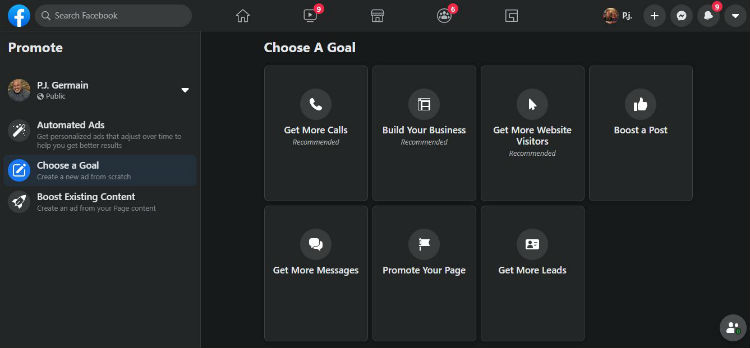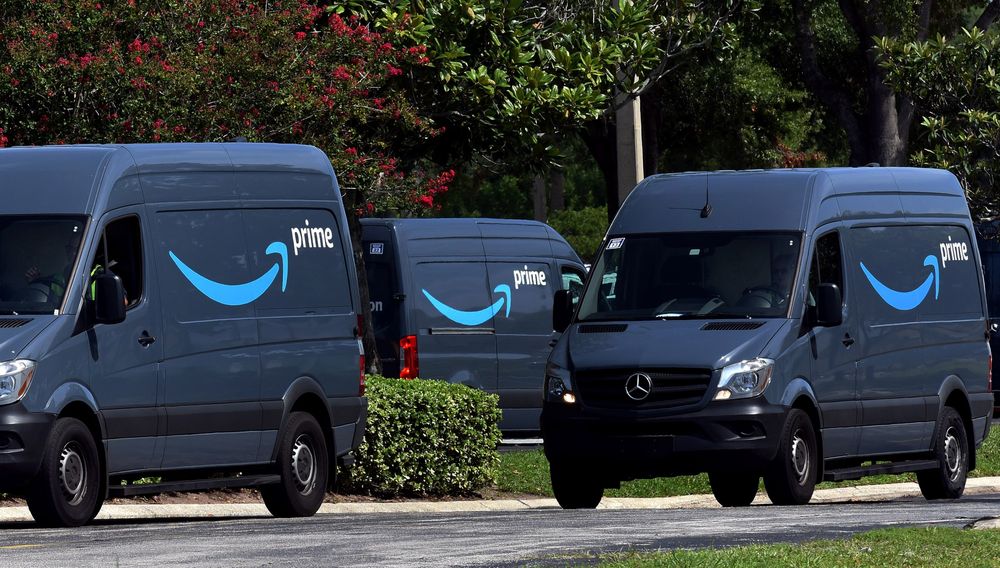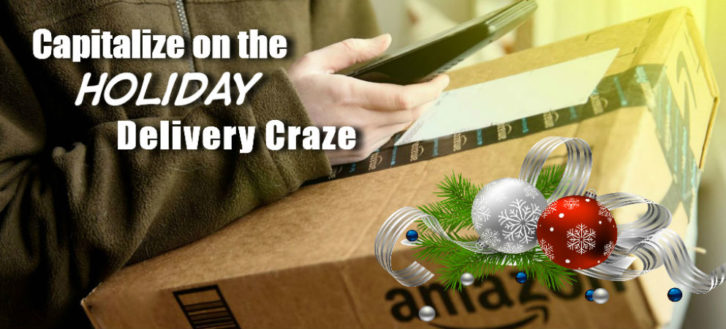Stores with physical locations are struggling to compete with the ease of retailers like Amazon and Ebay. This, however, could provide a gold mine of opportunities for entrepreneurs. Online markets have changed the way consumers shop. What used to be a place where specialty items were purchased is now where some people buy all their essentials. COVID-19 has introduced many customers to the convenience of food and grocery delivery services like Instacart and Doordash. And odds are many people won’t return to in person shopping once quarantine inevitably comes to an end.

Holiday season usually boasts the highest earnings of the year for many businesses. But perhaps the real breadwinners this year will be courier and freight companies. The demand for goods will likely outweigh actual availability for brick-and-mortar businesses struggling to keep up with COVID-19 restrictions. Any new delivery business worth their salt should take this as an opportunity to profit off of brick-and-mortar shortages and make their name in the delivery game.
Determining Your Customer Base
If you’re intrigued by opportunities that the delivery craze presents, think about how you’ll stand out amongst your competition. What can you offer to consumers that they don’t already have? Delivery companies don’t simply transport goods, they also give their customers peace of mind. They don’t have to beat the morning rush only to find a shortage of essential products. Customers no longer have to take time out of their day to wait in line at stores and risk exposure to the virus. For some higher risk individuals, delivery services have been a saving grace as catching the virus could have serious consequences on their health.
Because delivery services have become a necessity to some, adding an additional service fee on top of shipping costs is understandable. Deciding how much this service fee will be is dependent on your customer base. What area will you be serving and what stores and businesses are you planning to work with? You first need to narrow down your delivery boundaries and plan your budget accordingly. Once you know who you’ll be delivering to, you need to figure out what kind of goods and services your demographic wants. Nowadays people aren’t just getting their groceries and takeout delivered, there are all kinds of other products that consumers don’t necessarily have to pick up themselves. Get creative. Think about what your competitors aren’t delivering and try to fill that niche.

Once you’ve decided on what and to whom you’re delivering, you need to focus on creating a pool of loyal customers. Posting Facebook Ads, using regional hashtags that appeal to people in your area, and putting up fliers locally are all strategic ways to get your business’ name out there.. Once you’ve captured an audience and delivery requests start coming in, you need to find ways to keep your customers. Offering discounts, deals on certain delivery amounts, and sending referral codes to customers will keep them from straying to your competitors. Creating a newsletter for existing customers is a great way to engage with them and hear their value feedback. Plus, personalizing their deliveries or communications by sending them a birthday note or referring to them by their first name can help customers stay loyal and feel valued.
Managing Your Fleet
Aside from developing your company’s place in the market and determining a budget, delivery companies need to know the basic motor vehicle regulations that their drivers will be required to follow. You must also determine whether your company will be limited liability or a sole proprietorship. Once these technical steps are accomplished, you need to determine how to budget your fleet. Generally, courier services pay their drivers a flat rate for deliveries plus additional amounts based on hours spent or miles traveled. Keep in mind that you’ll have to pay your drivers more if they’re using cargo vans or box trucks as opposed to smaller vehicles. Though you’ll have to charge customers a fuel surcharge, it’s more worth it to go with larger vehicles if you’re serving an expansive geographic area.

Make sure that your drivers have everything they need to carry out deliveries safely and efficiently. Ensure that you’re covered with reliable insurance and locate an auto maintenance shop for routine checkups. You’ll also need to provide your drivers with tools that’ll make deliveries easier, like dolly’s, bungee cords, and ratchet straps to secure goods. Keep in mind that you’ll also need things such as moving blankets, protective wrap, and tarps to protect your items from being damaged in the delivery process. Drivers are exposing themselves to many customers per day, so it’s critical to provide them with the necessary protective gear such as sanitizer, face masks, and gloves to reduce the risk of spreading infections or viral illnesses like the coronavirus.
If you’re unfamiliar with the logistics of deliveries, you’ll definitely want to use an app that makes it easier to plan routes and manage dropoff times. That’s where apps like Straightaway, Circuit, and Road warrior come in. They’re routing software that provide automated logistical planning for delivery couriers. For example, using Straightaway requires drivers to snap a photo of their manifest (the list all dropoff locations) and the app will generate the most efficient route to make each delivery. Drivers typically save over an hour of time when using Straightaway as compared to traditional routing software such as Garmin. That extra hour lends to cheaper operating costs, better fuel efficiency, and happier drivers who can clock out early and spend more time at home after a long day. Straightaway also provides tracking tools that can help you manage customer service issues related to lost or mixed up orders, damaged goods, or delays.
Seize the Holiday
Consumers and businesses alike have been witness to the rise and fall of traditional retailers in the modern day. We’ve become privy to the benefits of online shopping, all of this made possible by the flexibility and ease of delivery companies. With people spending more time indoors, the demand for delivery services will likely be higher than ever this holiday season. If you’ve been blessed with an entrepreneurial spirit, don’t hesitate to capitalize on this booming industry.
About the Author
Zach Blank is the co-founder of Straightaway, a route optimization app that creates efficient solutions for proprietors, couriers, and customers.


